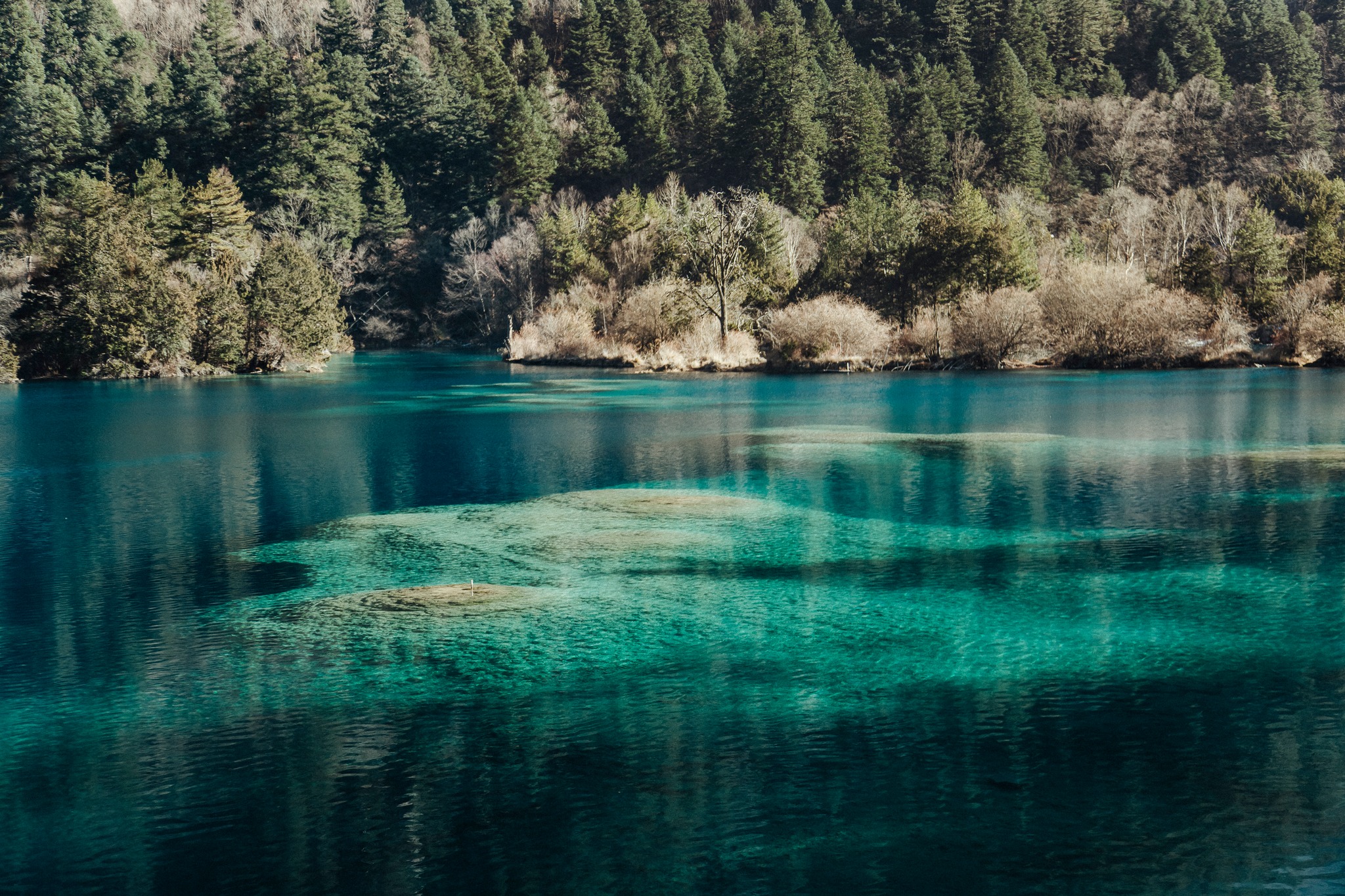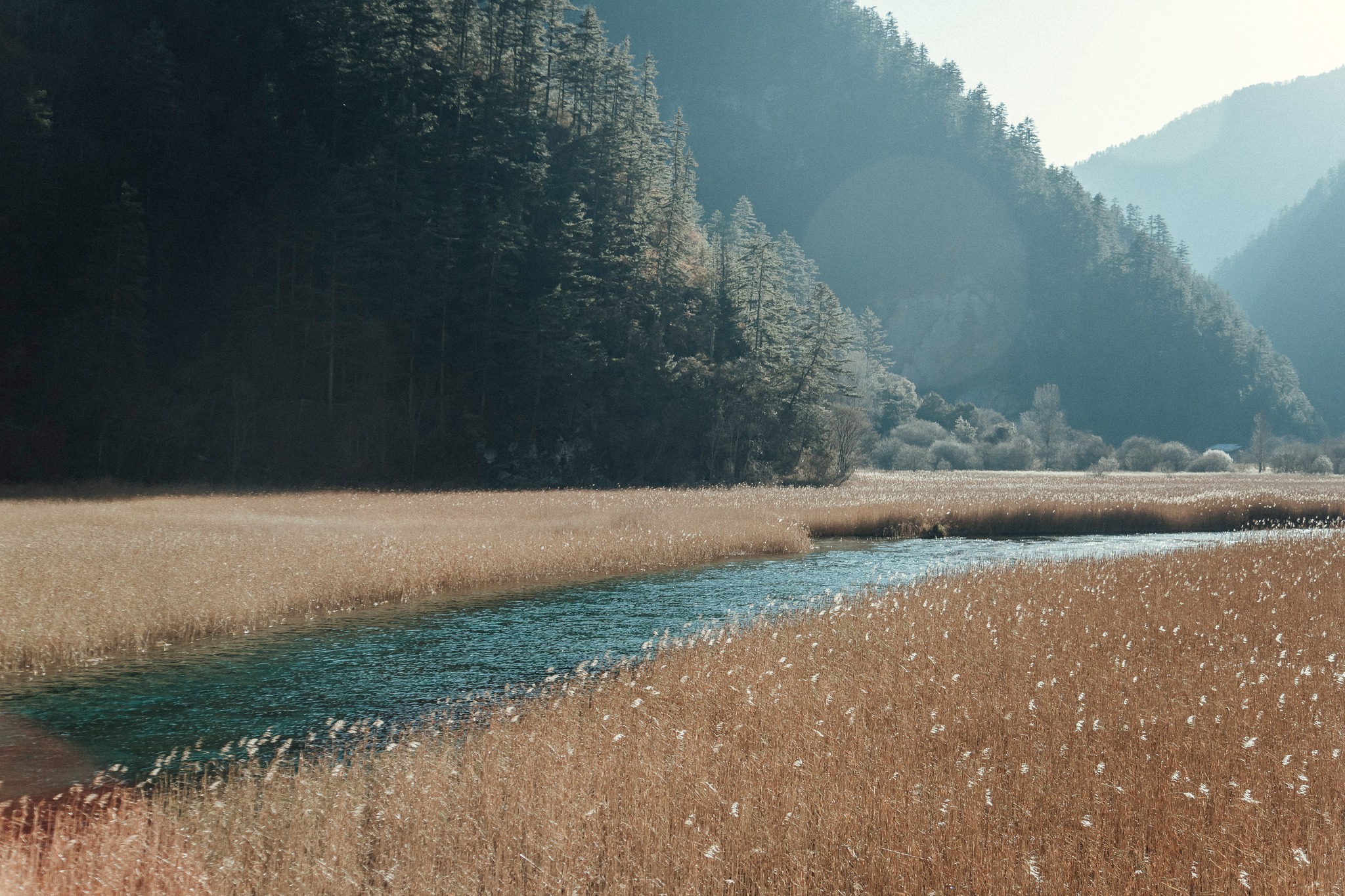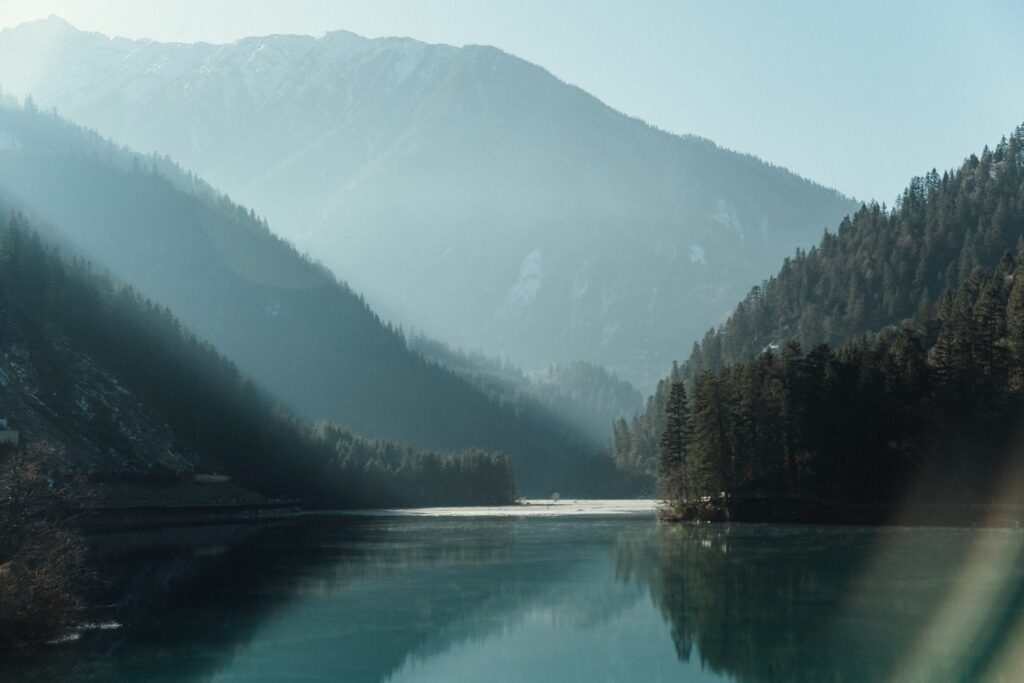There are places that feel like they belong in paintings, not reality—places so vividly beautiful they make you question your own eyes. Jiuzhaigou and Huanglong are two of those places.
I had seen photos of turquoise lakes, rainbow-colored calcite pools, and snow-dusted peaks reflected like mirrors. But nothing prepared me for actually being there. Nestled in the northern part of Sichuan Province, both Jiuzhaigou and Huanglong are part of a UNESCO World Heritage region known for its otherworldly beauty—and getting there felt like stepping into a fantasy novel.
Getting There: The Long Road Into a Hidden World
From Chengdu, I caught a 45-minute flight to Jiuzhai Huanglong Airport, soaring above layers of misty mountains. As we descended, the snow-capped Minshan range stretched out like a jagged, glistening spine. At over 3,400 meters, the air hits differently—thin, clean, and sharp like a cold sip of water.
I had read enough to expect altitude sickness, so I moved slowly, sipping ginger tea and breathing mindfully. My driver, Mr. Yang, picked me up at the airport with a smile and a playlist full of traditional Sichuan folk music. We chatted in fragments of Mandarin and laughter.
First stop: Huanglong.
Huanglong: Where Dragons Sleep in Pools of Color
Huanglong means “Yellow Dragon,” and from above, it’s easy to see why. The calcite terraces ripple down the mountain like scales on a mythical creature, each pool glimmering in shades of blue, green, and gold.
To reach the main scenic area, I took a cable car halfway up and hiked the rest through ancient forests of spruce and fir. The higher I went, the quieter it got. Pines whispered. Icicles hung like silent wind chimes. And then suddenly—it opened up.
There they were: hundreds of terraced pools, perfectly still, perfectly colored. Formed by thousands of years of calcium carbonate deposits, they looked like a staircase built by nature’s most meticulous artist.
I wandered slowly. A monk in saffron robes passed me on the trail, prayer beads clicking in his hand. Families took photos, children dipped fingers into the icy water. I sat on a wooden bench and let the colors soak in. I had seen nothing like it—not in Iceland, not in the Rockies. This was something else.

Jiuzhaigou: Valley of Nine Villages and Infinite Wonder
The next morning, I arrived at Jiuzhaigou National Park. Covering over 700 square kilometers, it’s more than a park—it’s a living canvas of lakes, waterfalls, and snow-frosted forests all shaped by time, tectonics, and Tibetan culture.
The name means “Valley of Nine Villages,” and it’s home to Tibetan and Qiang communities who still live within its bounds. The park is laid out like a Y-shape, with shuttle buses taking you up the branches, but I often chose to walk between the major sites. I didn’t want to rush. Every few steps brought something new.
Highlights of Jiuzhaigou:
- Five Flower Lake: Easily the most breathtaking spot. It’s not just blue—it’s every shade of it, with visible fallen trees perfectly preserved beneath its transparent surface. Locals believe it’s sacred. I believe it too.
- Nuorilang Waterfall: One of the widest highland waterfalls in China, especially dramatic when surrounded by golden autumn leaves or soft snow.
- Mirror Lake: As still as glass. The surrounding mountains reflect so perfectly, I had to blink to find the edge of reality.
- Panda Lake: Named for its proximity to wild panda habitat (no, I didn’t see one—but I felt their presence in the silence of the forest).
There were moments in Jiuzhaigou when I forgot to take photos. I just stood, sometimes alone on a path, as the sun filtered through golden trees and the air smelled like snow and pine. I met Tibetan women weaving scarves and monks collecting alms. Everyone greeted me with a warm “Tashi Delek” and a nod.

Beyond Beauty: The Feeling of These Places
Both Huanglong and Jiuzhaigou are undeniably beautiful—but what struck me most was how quiet they were. Not just in sound, but in spirit. There’s a reverence to the landscape. You walk slower. You speak softer. You breathe deeper.
There’s also fragility. Jiuzhaigou was hit by a major earthquake in 2017, and signs of the recovery are still visible—repaired walkways, closed areas, and conservation notices. It’s a reminder that even paradise is impermanent.
Tips for Future Travelers:
- Best Time to Visit: Autumn (October) for the golden foliage and crisp air. Spring is also lovely. Winter offers snow magic but can limit access.
- Altitude Warning: Huanglong is much higher (up to 3,500m+) than Jiuzhaigou. Go slow, drink lots of water, and rest when needed.
- Where to Stay: Jiuzhaigou Town offers a variety of guesthouses and boutique hotels. I stayed in a family-run inn with Tibetan-style blankets and yak butter tea.
- Food: Expect lots of hotpot, yak meat, and Tibetan barley bread. I had butter tea and tsampa for breakfast—and honestly, it grew on me.
- Eco-Respect: These places are sacred to locals and incredibly delicate. Don’t litter, don’t stray from paths, and treat the land like you would a temple.
What I Took Home
Jiuzhaigou and Huanglong left me with more than stunning photos—they left me still. Still inside. Still in awe. Still grateful.
In a world full of noise, these places whispered. And I’m so glad I listened.

— With silence in my pocket and colors in my memory,
A traveler who found peace in the folds of the Minshan Mountains

